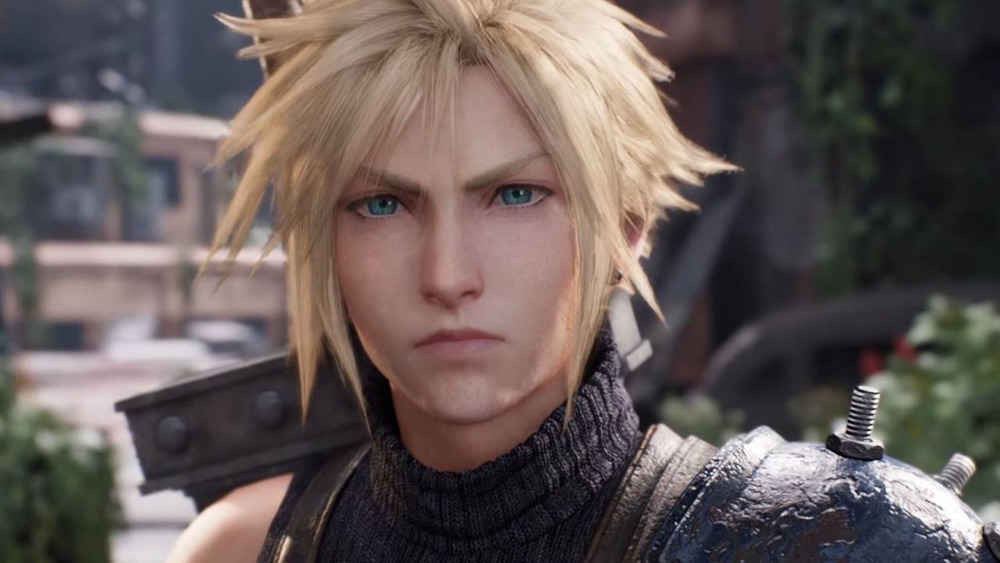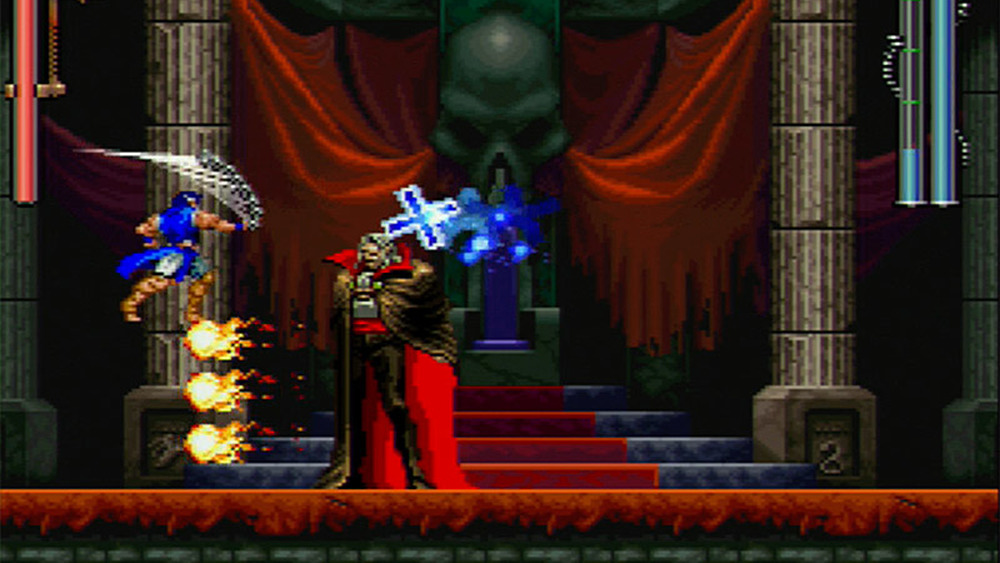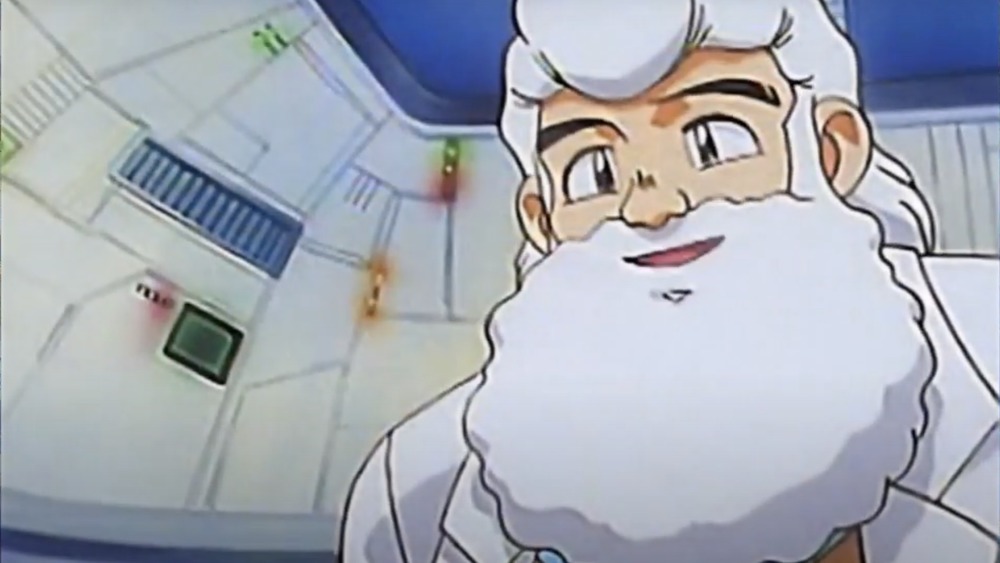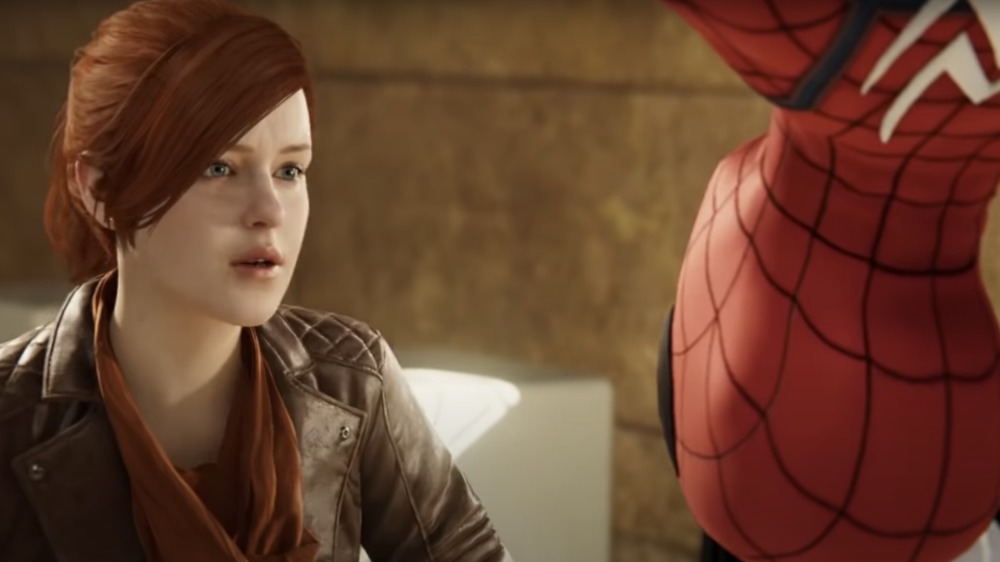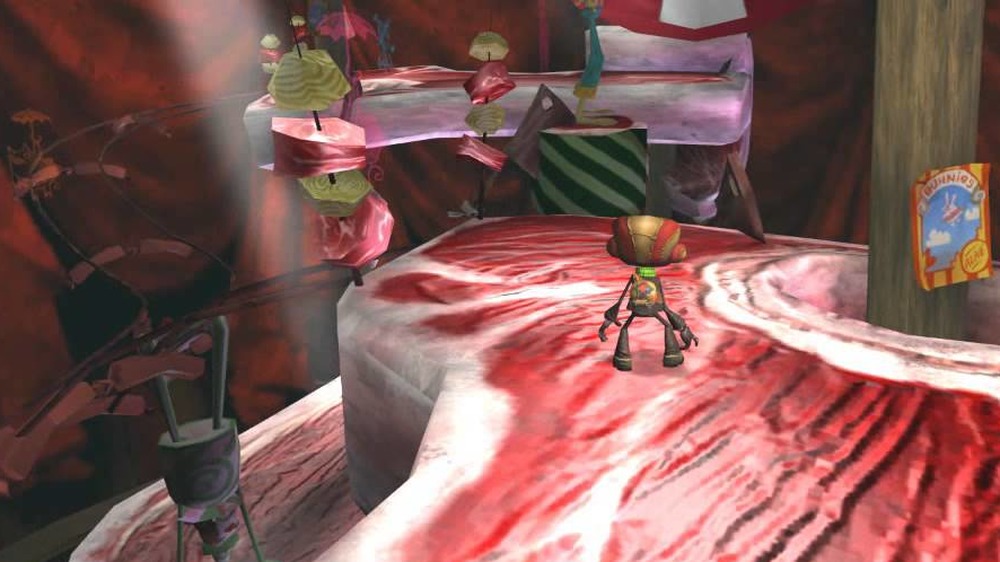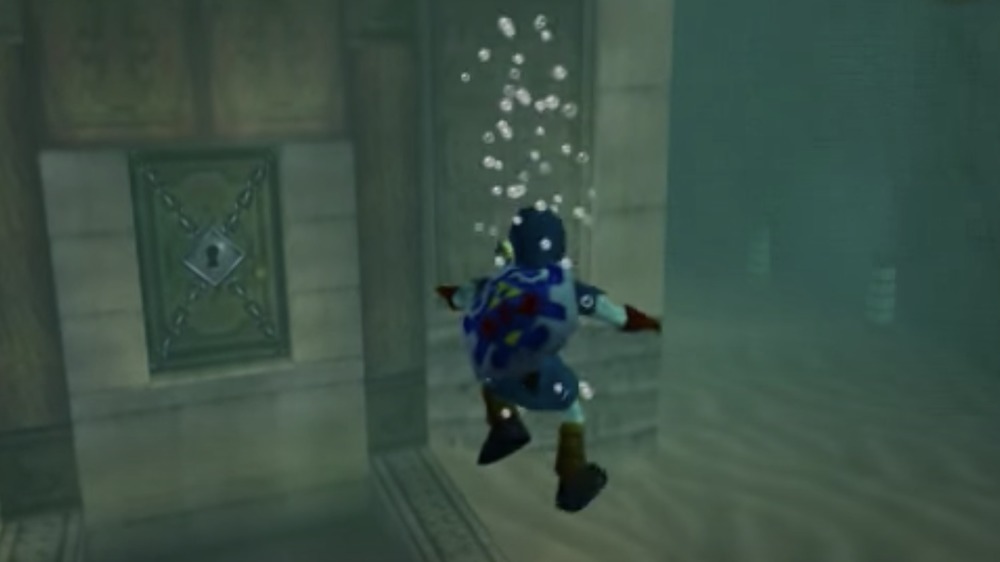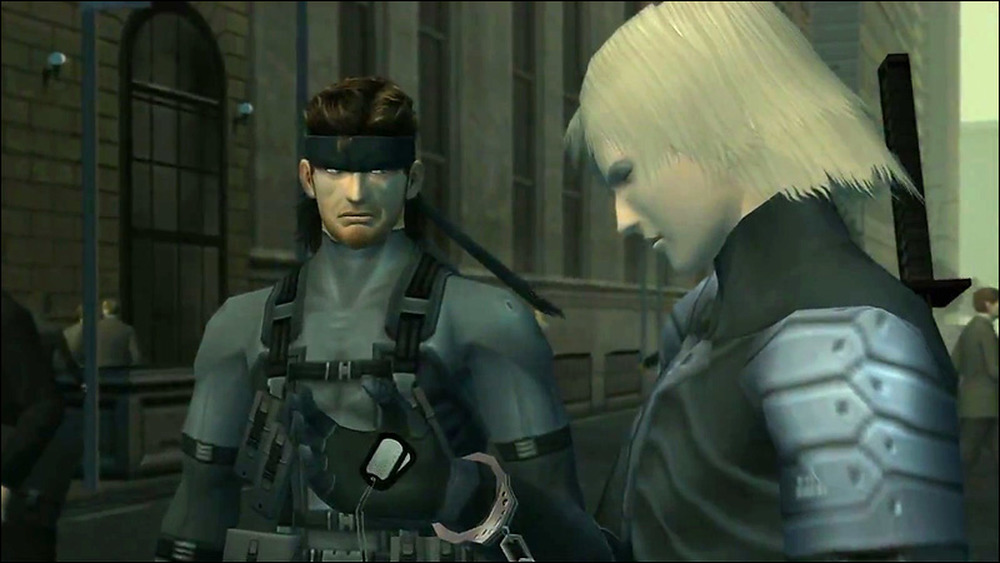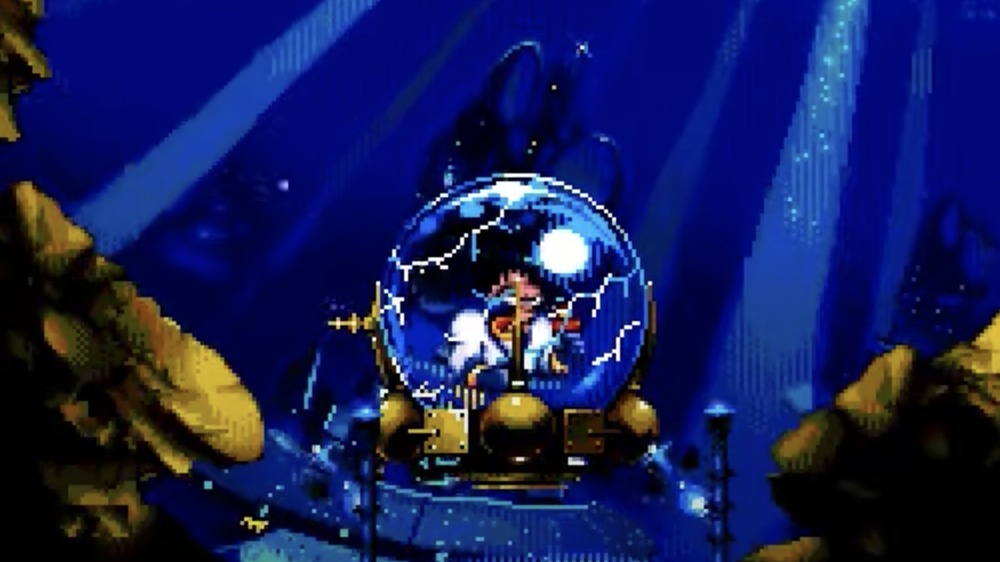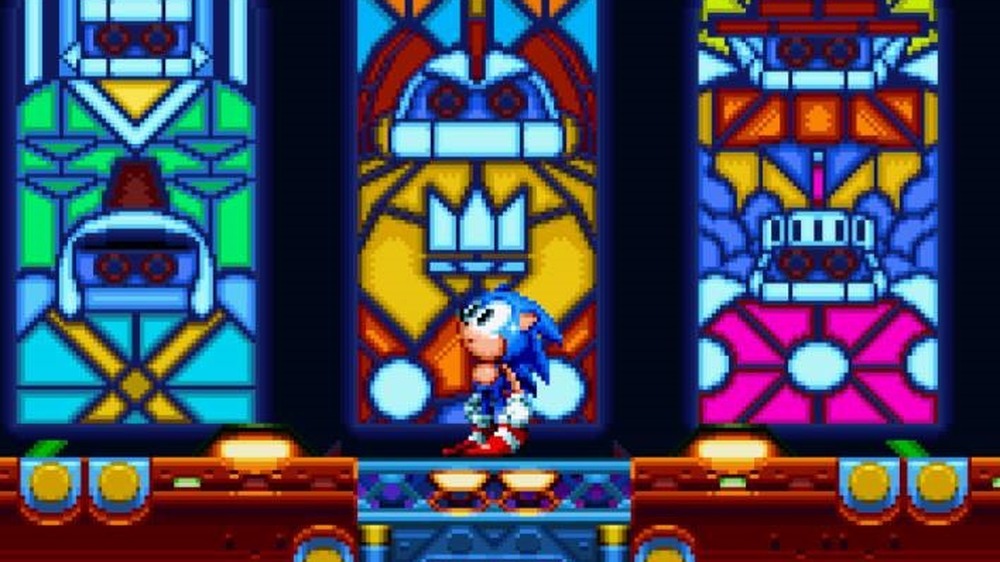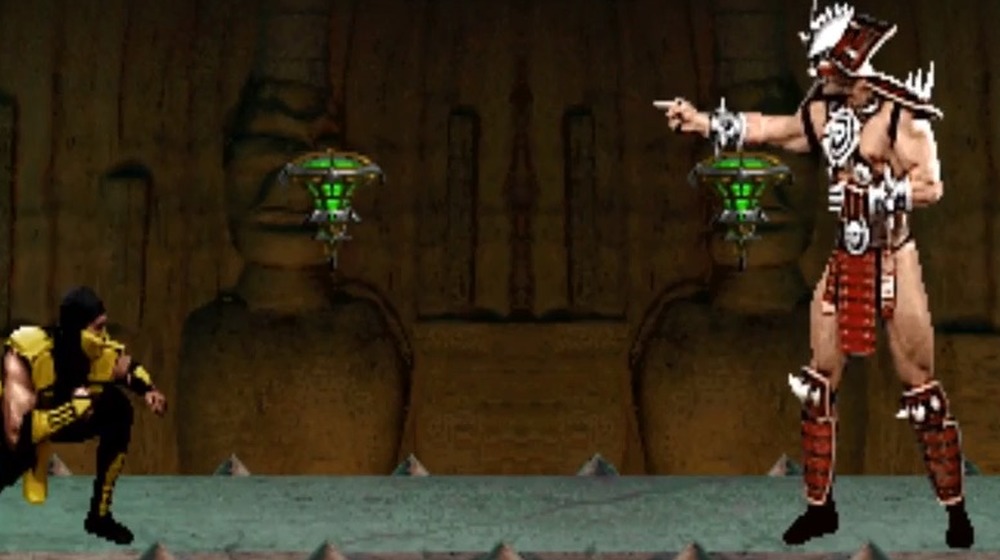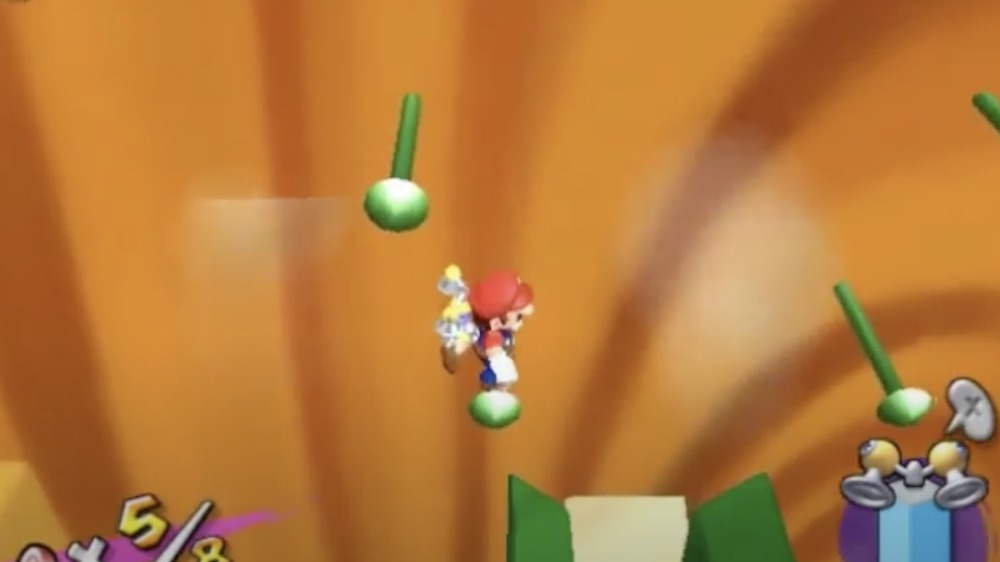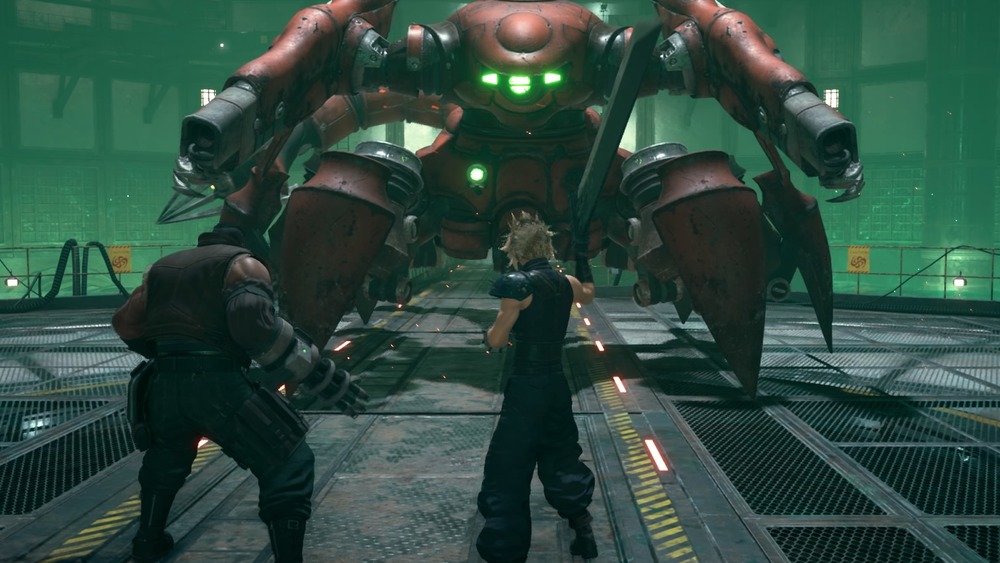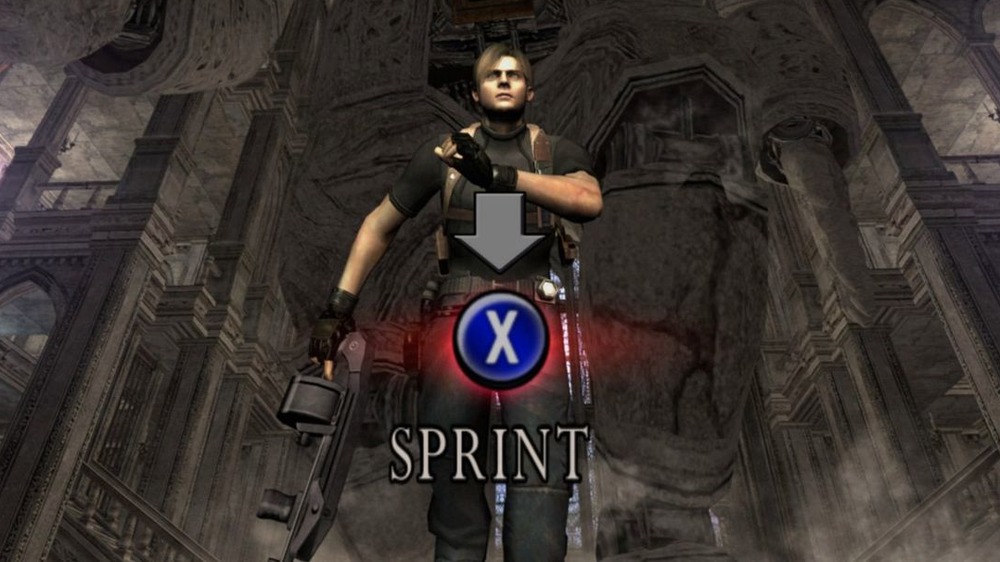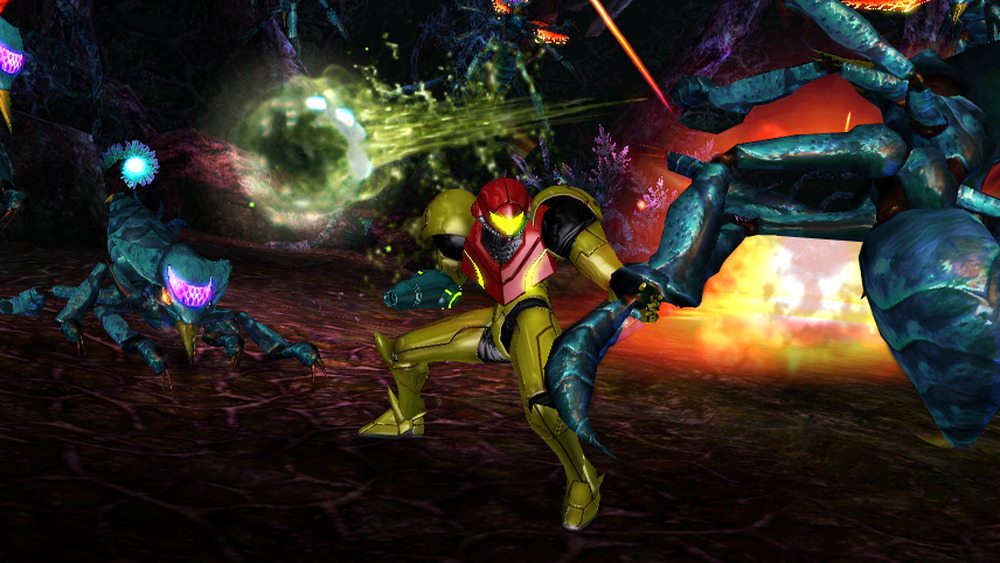Moments That Nearly Ruined Great Games
Everyone has a favorite video game they will defend until the end of time. But no matter how good your favorite game is, it's rare to find a flawless gem. Even the best of the best have small flaws, whether they're egregious sections, underwhelming characters, or disappointing features that you can't possibly defend, no matter how hard you try. Are these demerits enough to ruin an otherwise flawless game?
For the most part, gamers can easily turn a blind eye to some aspect of a game that is less than ideal. However, sometimes a highly acclaimed title can contain an element that nearly ruins the entire experience. In some cases, it's so bad that even the developers are willing to own up to what they've done. But despite their flaws, those timeless classics that are loved by everyone manage to rise above, maintaining a high rating.
Here are moments that nearly ruined great games.
Castlevania: Symphony of the Night's unforgettable line
There are few who have not heard the infamous line "What is a man? A miserable little pile of secrets." Everyone has had a good laugh over it at some point. And while it doesn't necessarily break the game, it certainly draws mockery upon what is otherwise a highly acclaimed, incredibly produced 2D sidescroller.
Castlevania: Symphony of the Night's influence in the formation of the "Metroidvania" genre cannot be overlooked. The game followed Super Metroid's lead in offering an open-world format where the player is allowed the freedom to explore, progressing as their character levels up and gains new abilities. When you look at Symphony of the Night as a whole, with its beautifully rendered graphics and overall stunning presentation, it's easy to see why such a cheesy, dramatic scene could ruin what is otherwise a perfect game. Even Konami is aware of the ills of this scene, as the dialog was rewritten in its PSP and PS4 ports.
It's not just the words themselves, but the voice acting that makes this moment in the game hard to take seriously. When comparing the American dialog to the original Japanese script, it becomes clear this was a classic case of shifting from the source material to account for differences in culture.
The voice acting in Mega Man 8
The Mega Man franchise is one of the most classic and recognized games in the 2D action-platformer category. Balancing intense difficulty with addictively fun mechanics and level design, Mega Man games can mostly be considered perfect by fans of the genre — as long as you're not playing Mega Man 8. It's still a fantastic entry in the series, though there are two major problems — one that will make you laugh, and one that will make you cry.
First, the voice acting. If you thought Symphony of the Night had some bad lines, you haven't heard anything until you've listened to the horrendous dialog in Mega Man 8. Whoever plays Dr. Light deserves an award for phoning it in, giving birth to the infamous "Dr. Wahwee" and even noticeably flubbing his line. How this one take managed to make it into the final game, the world will likely never know. But that's not Mega Man 8's only flaw.
Frost Man's stage is cruel and unusual punishment, and could possibly force you to throw your hands up in defeat. This level features a grueling snowboarding section that requires unreasonable precision and timing. Sure, Mega Man games are hard, but this level is downright unfair.
The MJ missions in Spider-Man for PS4
When Spider-Man was released for PS4, it was a major hit. An all-around great title, this nearly perfect game was unfortunately hindered by its MJ missions.
There are a few problems with these particular sections. For one, MJ is introduced as a far more interesting character than she appears to be when playing as her. She's a young, bright investigative journalist, but you'll be sorely disappointed when you discover she is incapable of doing anything aside from moving about. Not only does this undo the character building that took place in the beginning of the game, but it makes her missions incredibly boring to play. And even when she does obtain an ability, it's simply an item that directs Spider-Man so he can handle the situation himself. What a wasted opportunity.
Syfy's Brittany Vincent argues that a better alternative would have been to incorporate Gwen Stacy as a playable character instead of MJ. This would have been an excellent opportunity to offer players the option to play as both Spider-Man and Spider-Gwen, possibly even opening the door for great co-op play. MJ could have served an important role in the plot as an NPC, giving the game two strong female protagonists. Alas, that didn't happen, and players got the MJ missions instead.
The Psychonauts meat circus
Double Fine Studios sure had a "fine" game on its hands when making Psychonauts. Turning the world inside one's mind into an intricate set of playable levels, Psychonauts delivers a dynamic art style, unique characters, and clever writing, creating an experience unlike anything else. It's a brilliant translation of the mental world into something you can play in a video game. Everything comes together in a near-perfect package. But there's one section in the game that has caused grief to so many who have played Psychonauts: the dreaded meat circus.
Psychonauts is a major cult classic that was not a big seller in its day. You cannot blame the meat circus for this, though it definitely didn't help. This final stage in the game was designed to be unreasonably difficult to the point where it can almost spoil all that was done right. Wonder How To's Nicholas Battjes calls Psychonauts one of his favorite games, but states that the meat circus nearly drove him to hate the game. Even the creators knew they had gone too far, as they retooled the difficulty in the 2011 Steam re-release.
Ocarina of Time's Water Temple
Why is it so hard to make water levels fun and enjoyable in video games? So often a great game is burdened with a chore of a water stage that gamers will dread, so why are they so prevalent? You would think that an ironclad series like The Legend of Zelda could deliver a decent water area. Sadly, this is not the case.
The Water Temple in Ocarina of Time is infamously frustrating. The Zelda series is known for some of the best dungeon design, making the Water Temple an even harder pill to swallow. Having to swim, progressing through this dungeon is a slow and tedious task, leaving you helpless to the plethora of enemies ready to attack. Throw some backtracking in the mix, the need to unequip and re-equip underwater gear, managing water levels, and many other features that slow you down even more, and you've got a perfect recipe for a terrible level.
It's such a problem that Eiji Aonuma, the game's director, felt the need to admit fault and apologize. He acknowledged that the water temple is needlessly frustrating, and wished he had simplified the process of equipping Link's heavy boots.
The Metal Gear Solid 2 surprise
After the phenomenal success that was Metal Gear Solid, fans anxiously awaited a sequel. Naturally, following up such a smash hit is no easy task. So how did Hideo Kojima give gamers a new title they would talk about as much as the original? He did the unthinkable — he replaced Snake. Not only that, he did his fans dirty by leading them to believe Snake was still the game's protagonist.
Just imagine the level of disappointment and betrayal gamers felt when they found out Raiden was the new main character in the game. Even demos and trailers featured Snake, with no hint of Raiden whatsoever. Critics remained tight-lipped, aiding Kojima in his deception and urging players to give Metal Gear Solid 2: Sons of Liberty a fair chance despite any unsettling surprises. It was a brilliant twist indeed, though it was done at the expense of alienating the fan base.
MGS2 is lauded for its story and gameplay, and though it was generally well-received, it might have been a greater hit with the fans had it allowed you to play as Snake beyond the first mission. Vice's Steve Burns cited Raiden as one of the reasons he hated MGS2.
Earthworm Jim's wild submarine ride
What is perhaps one of the most bizarre and brilliantly zany video game mascots of the '90s, Earthworm Jim arrived during the 16-bit revolution with incredible animation, fun and varied gameplay, and a whole lot of attitude. Jim was one of those characters that showed tremendous promise with two hit games, but ultimately died in the transition from 2D to 3D gaming.
While the first game was widely acclaimed and is still remembered fondly, there's a level in it that halted progress for so many fans, and ultimately left some feeling salty about the experience.
The submarine first appears in a section that's easy enough. The second submarine encounter isn't so bad either. The third submarine section, however, is unreasonably difficult, requiring precise navigation within an inadequate time limit. You'll essentially have to commit the map to memory if you ever hope to see Major Mucus.
This torturous level was no mistake on the developers' part. In fact, it was a sinister device to prevent gamers from renting and quickly beating the game, leaving them no choice but to buy a copy. This was a regular practice in the '90s, and very nearly ruined an otherwise great game.
Sonic Mania's final stage
Poor Sonic. Like a washed-up daytime television star, Sonic once stood as tall as Mario in the video game colosseum. But his struggle to find footing in the third dimension left him a shadow of his former self. Sure, there have been some good Sonic games here and there, and he continues to have a strong fan base. But the blue hedgehog may never get to relive his glory days — unless, of course, you play Sonic Mania.
Sonic Mania is the love letter to fans the series needed. It's pretty much everything that made the early games great wrapped into one glorious package and then some. And while Sonic really deserved an immaculate masterpiece for his comeback, fans would have to settle for close-to-perfect because of one level.
The only thing "titanic" about the final stage, Titanic Monarch, is how much of a let down it is. It's filled with numerous enemies and gimmicks that make it completely insufferable. You'll constantly be facing this complicated orb platforming and hopping through purple mist that teleports you to different sections of the stage. This opens the door to endless backtracking where you'll regularly get lost. Such a method of progression isn't even slightly fun.
Mortal Kombat's most sinister combatant
If you've played Mortal Kombat, you've likely encountered Shao Kahn. And if you've had the displeasure of meeting the man, you have probably kicked a machine or thrown a controller in response to his infuriating cheapness. The Mortal Kombat series is one of the most beloved fighting franchises, yet Shao Kahn has continued to be a thorn in the side of anyone who challenges him.
Naturally, the final boss is expected to be hard, though Shao Kahn is overpowered beyond reason. His vulnerabilities appear to be inconsistent, he has little to no recovery time from attacks, he barely takes damage, and he is capable of nuking your health bar with one move. His unbalanced fighting style can be credited to the developers carrying his legacy of unmatched power from the arcade to home screens. In arcades, games were designed to milk as many quarters out of you as possible. But his fighting style should have been adapted accordingly. Instead, Shao Kahn forces you to play dirty and sink to his level if you hope to emerge as champion.
Scott Deakin, a community writer at VentureBeat, recounts his own struggles with Shao Kahn. His is a personal vendetta that ultimately ends in defeat.
Super Mario Sunshine's pachinko level
What is it with video games and pachinko? Super Mario Sunshine was a remarkable follow-up to Super Mario 64 and is sometimes cited as a fan favorite. As such, those who look back fondly at the cherished GameCube title might block out memories of the annoying and unnecessary pachinko level.
Super Mario Sunshine is known for having some challenging physics, making pachinko all the more questionable as a gimmicky inclusion in the game. But gimmicks can be tolerated. This section of Mario Sunshine, meanwhile, is almost universally hated. Super Mario Sunshine was packed with strange, otherworldly bonus levels, so you likely wouldn't be surprised when you encountered the monolithic pachinko stage. Still, that didn't mean anyone had to like it.
Pachinko is not the only flaw in this game, but it is the most notable. Had this challenge been cut from the finished product, Super Mario Sunshine almost surely would have benefited.
Final Fantasy 7 Remake's disappointing ending
For years, fans have waited for Square to remake one of its most successful games, and finally, their collective wish came true. Final Fantasy 7 Remake delivers a fresh new take on the classic hit's story with updated and enjoyable gameplay mechanics.
The remake does a lot to flesh out its characters so anyone new to the game will have a solid understanding of what's at stake. Despite the fantasy landscape in which events take place, it's easy to relate to the unfolding action and invest in what's happening. But there's one aspect where the remake falls short to please its fans, and that's the ending.
Many fans have been greatly disappointed at how the ending deviates from the original. It also appears to betray the realism established throughout the game by shifting into something that's more of a spectacle. The ending doesn't really fit with the rest of the narrative, tossing all the grounded story elements out and diving straight into the mythical and supernatural. The change is sudden and very well could ruin an otherwise skillfully developed story. Only time will tell as the remaining parts are released if everything successfully comes together.
Resident Evil 4's quick-time events
Quick-time events: you either love 'em or you hate 'em. And like it or not, Resident Evil 4, is packed with QTEs aplenty. Regardless of how you feel about them, these sections are abundant in RE4 and can randomly interrupt the action. Failure to successfully navigate the QTEs usually forces you to start over from the beginning, making for an incredibly tedious experience. The developers even had the gall to integrate QTEs into boss battles, adding an unnecessary extra requirement to win those fights.
As annoying as they may be, sometimes Resident Evil 4 does QTEs right. A situation where your character needs to quickly move out of the line of danger is generally okay. What isn't okay, however, is when a cutscene is playing and all of a sudden a quick-time event is shoehorned into the cinematics. Typically, this is the time to sit back, relax, and enjoy the story. But when you're suddenly and unexpectedly thrust back into control of your character, it can catch you off guard and result in a swift demise, setting you all the way back to your most recent checkpoint. Nevertheless, even the worst QTEs are not enough to ruin this fan favorite.
Metroid Other M ruins Samus' character
Despite its popularity, Metroid seems to get far less attention from Nintendo than most of the company's other franchises. The series definitely deserves better treatment, just as Samus' character deserved better treatment in Metroid: Other M.
The game dives too deep into her backstory, ruining her silent protagonist aura and depicting her as inconsistently emotional with a personality that's largely flat. She tells her story through an unnecessary and droning narration in a tone that is mostly detached, and the moments where she does emote, it's incredibly heavy-handed. The audience also gets a glimpse into her past where she is not painted in the most positive light. Far from the quiet, brave, determined hero that fans know as Samus Aran, gamers saw her as an insubordinate who quit the Galactic Federation in an act of rebellion.
A classic case of "less is more," Other M gave away too much about the series' protagonist. It's a shame, because her backstory is so alienating that it may have turned a lot of fans away from a game that attempted to recapture what worked so well in Super Metroid. Aside from the story, Other M was generally praised by critics.

